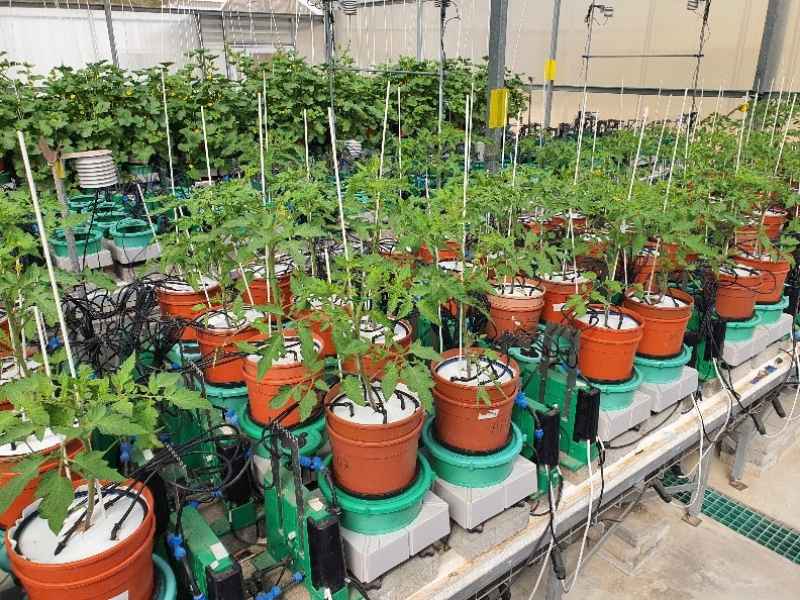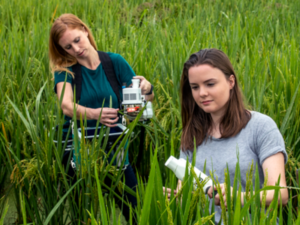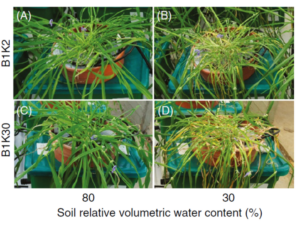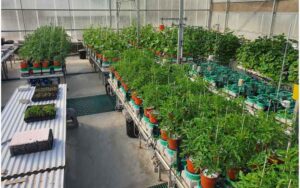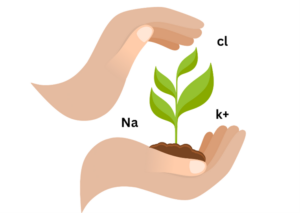Plant analysis is a valuable tool used in various fields of study, including agriculture, botany, and environmental science. It involves the detailed examination of plant characteristics, functions, and interactions within their ecosystems. By analyzing plants, researchers and scientists can gain valuable insights into their growth patterns, nutritional needs, disease resistance, and overall health. This information is crucial for enhancing crop productivity, understanding ecological dynamics, and developing effective conservation strategies.
What types of plant analysis exists?
One of the key aspects of plant analysis is the assessment of plant morphology, which refers to the physical characteristics and structures of plants. This includes the examination of leaf shape, size, and arrangement, stem architecture, root structure, and flower morphology. These features provide vital clues about a plant’s classification, adaptation strategies, and reproductive mechanisms. By carefully studying these characteristics, researchers can identify plant species, assess their evolutionary relationships, and understand their ecological roles within a given ecosystem.
How is plant biochemistry analyzed?
Plant analysis involves the evaluation of plant biochemistry, which is the study of plant compounds and their biochemical pathways. This includes the analysis of secondary metabolites such as alkaloids, flavonoids, and terpenes, which play essential roles in plant defense mechanisms, pollination, and interactions with other organisms. By understanding these chemical compounds, researchers can explore their medicinal properties, discover potential bioactive compounds, and develop new drugs.
What does the examination of plant physiology entail?
Additionally, plant analysis encompasses the examination of plant physiology, which focuses on the functioning of various plant processes. In this article, our focus will be on this kind of analysis. The physiological analysis involves the study of photosynthesis, stomatal conductance, transpiration, water use efficacy, biomass and etc. By analyzing these processes, and with the proper plant phenotyping system, scientists can determine the efficiency of a plant’s metabolic activities, its response to environmental stimuli, and its ability to withstand adverse conditions. This knowledge is fundamental in optimizing agricultural practices, developing strategies for plant breeding, and identifying plants that are better suited for specific environmental conditions.
Why plant physiological analysis is the most accurate way to indicate plants behavior?
Plant physiological analysis stands out as the most accurate method for indicating plant behavior due to its ability to provide in-depth insights into the intricate workings of plants. By examining the physiological aspects, researchers can uncover the underlying mechanisms that drive plant responses and gain a comprehensive understanding of their behavior. Here, we will explore the reasons why plant physiological analysis excels in accuracy compared to other approaches.
How does plant physiological analysis directly examine physiological processes?
Firstly, plant physiological analysis directly examines the physiological processes occurring within plants. It delves into vital functions such as photosynthesis, respiration, transpiration, and nutrient uptake. By focusing on these fundamental processes, researchers can obtain real-time and precise information about the plant’s performance and its ability to carry out essential functions. This direct assessment ensures accuracy by providing insights into the plant’s physiological state and its responsiveness to environmental factors.
How does plant physiological analysis offer a holistic perspective on plant behavior?
Secondly, plant physiological analysis offers a holistic perspective on plant behavior. It considers the intricate interplay between genetics, environment, and plant responses. Unlike approaches that solely concentrate on morphology or genetics, physiological analysis considers the integration of multiple factors. This comprehensive approach allows researchers to understand how genetic traits manifest in a plant’s physiology and how the environment influences its responses. By encompassing these interdependencies, the analysis provides a more accurate representation of plant behavior.
Why is physiological analysis sensitive to environmental changes?
Furthermore, physiological analysis of plants is very sensitive to changes in environmental conditions which can well simulate real environmental conditions. Plants exhibit dynamic responses to fluctuations in drought, flooding, temperature, soil and nutrient availability. By using physiological measurements, researchers can capture these responses on a fine temporal scale that accurately reflects the plant’s adaptation, stress tolerance, and overall behavior. This sensitivity to environmental changes ensures that the analysis accurately represents the plant’s behavior and responses in real time.
Why the PlantArray system is the best physiological phenotyping screening platform?
The PlantArray system stands out as the premier physiological phenotyping screening platform due to its numerous advantages and advanced capabilities. This state-of-the-art system offers unparalleled features and functionalities that make it the preferred choice for researchers and scientists. Here, we will explore the reasons why the PlantArray system is considered the best in its class.
the PlantArray system offers a comprehensive suite of measurements and analyses for a wide range of physiological traits. From stomatal conductance to growth dynamics, the system provides an extensive set of parameters that can be accurately measured and analyzed. This breadth of measurements ensures a comprehensive understanding of plant physiology and behavior, making the PlantArray system an all-in-one solution for physiological phenotyping.
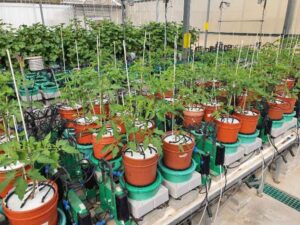
Additionally, the PlantArray system boasts advanced automation and data processing capabilities. With the SPAC software the researchers can efficiently analyze large datasets and extract valuable information during the whole experiment in real time. This automation not only saves time but also reduces the potential for human error, ensuring reliable and consistent results. The ability to process and interpret data quickly and accurately is a significant advantage of the PlantArray system.
Furthermore, the PlantArray system excels in its ability to integrate various environmental factors into the phenotyping process. The system can be customized to simulate and control different environmental conditions such as soil, temperature, humidity, and drought. This flexibility allows researchers to study plant responses under controlled conditions, mimicking real-world scenarios and providing insights into how plants behave in different environments.
Contact us today for more details
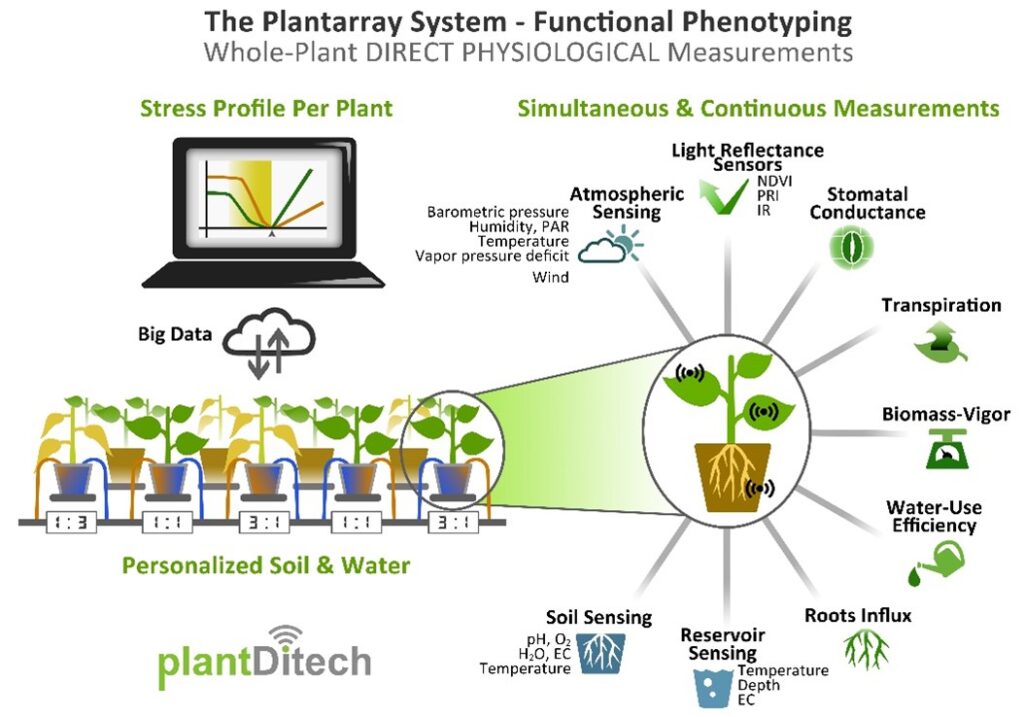
The PlantArray system is also known for its scalability and adaptability. It can accommodate a wide range of plant species, from small model organisms to large crops, making it suitable for diverse research areas. Whether studying tomatoes, wheat, to cacao and pines, the system will fit.
Lastly, the PlantArray system has a track record of success and widespread adoption within the scientific community from all over the globe. Its reliability, accuracy, and advanced capabilities have earned it a reputation as the go-to platform for physiological phenotyping screening. Researchers can trust the PlantArray system to deliver robust and precise data in real-time, facilitating groundbreaking discoveries and advancements in plant science.

